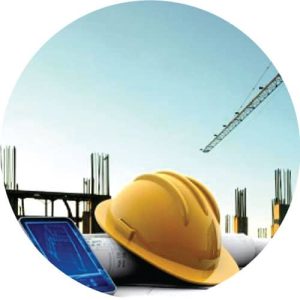PPE Goes High-Tech | Personal Protective Equipment
As summer progresses, jobsites are at their productive peak. There’s likely a lot of equipment moving about, and everyone’s busy – focused on the job at hand. But this is no time for people to let their guard down. Personal safety is more important than ever. But it takes more than a brightly-colored reflective vest and a hard hat.
Fortunately, just as technology has transformed how construction equipment is built and operated, advance technologies are behind new devices and Personal Protective Equipment that enhance worksite safety, both actively and passively. Here are some of the new tools you might want to add to your inventory:
Collision avoidance
 Naturally, avoiding collisions – with fixed objects as well as people – is a priority. It was a great leap forward when beeping back-up alert horns were added to all worksite machinery. But those alerts have become ubiquitous, coming from multiple directions and becoming essentially no more than background noise in many situations. That can significantly reduce their value as a warning system.
Naturally, avoiding collisions – with fixed objects as well as people – is a priority. It was a great leap forward when beeping back-up alert horns were added to all worksite machinery. But those alerts have become ubiquitous, coming from multiple directions and becoming essentially no more than background noise in many situations. That can significantly reduce their value as a warning system.
Meanwhile, equipment operators now have far better visibility to the surrounding work area – full circle in many cases. But operators have to watch what they’re doing as well as their in-cab display monitors, and there are still blind spots.
New anti-collision technologies include:
- A radar-based system designed to detect blind spots to the rear, but which can provide 360o detection with the addition of multiple sensors.
- A radar-based system that detects objects to the side of a vehicle moving over the road faster than 10mph. The operator is able to see whether the object detected is stationary, moving away from the sensor or toward it, and the system is designed to ignore non-problematic stationary objects such as guardrails.
- A system that uses low-frequency magnetic field technology to help operators “see” around blind corners, and through walls or racks.
- A Personal Protective Equipment system that uses wireless technology to link safety apparel with in-cab audible and visual alerts to avoid back-up collisions.
- A passive system that uses RFID tags on PPE vests (front and back) and hardhats to alert machine operators that a crew member or obstacle is nearby. (The alert sounds entirely different from the traditional back-up beep and continues until the person moves out of range.) The tags can also be placed on structures or other fixed objects to warn operators.
 Welding tech prevents trip-and-falls
Welding tech prevents trip-and-falls
Often on construction sites, welding projects and their power source are far apart. Welders have to go to the power source, adjust settings to match the type of welds they need to make, then hike back to the work area to accomplish the work. If the settings need further adjustment, that requires another back-and-forth trip. This not only reduces productivity, it increases opportunities for the welder to trip over the cables that snake from the power source to the welding unit.
Lincoln Electric offers two new products that eliminate this dangerous and time-wasting situation. CrossLink technology enables the welder to adjust settings remotely. Their Flextec 350X welding power supply eliminates the need to run multiple high-voltage cables. Instead, it serves as a distribution box, providing up to four low-voltage lines that can run to separate welding projects.
Guarding against fatigue
A wristband something like a Fitbit can actually measure the amount and quality of sleep a worker has had over the past few days, to predict if he or she is too tired to remain alert and safe on the job. Supervisors can than decide to send the person home or reassign them to work that is not in a dangerous area.
Increasing nighttime visibility
A head lamp that attaches to a hard hat spotlights the work at hand and also serves as a worker safety device, since the light can be seen as far away as a quarter-mile.
Drones
You had to know that drones would make their way into the construction industry. Because they provide aerial visibility and are controlled remotely, they can be used to monitor wider work areas and to replace humans in performing certain dangerous tasks. Examples include checking the security of scaffolding braces or checking the integrity of a trench or structure before allowing crew members to enter.
What will they think of next?
